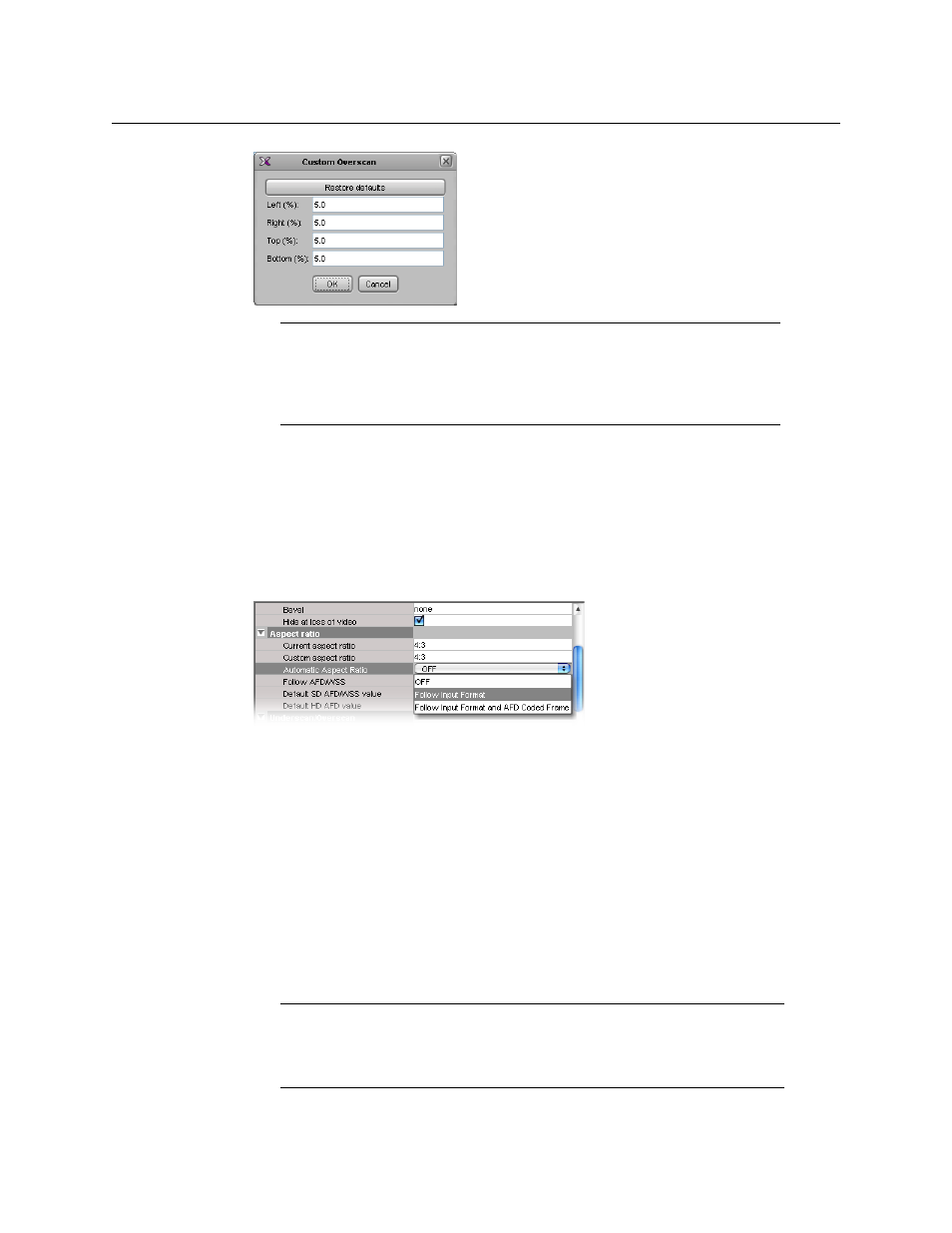Configuring automatic aspect ratios – Grass Valley Kaleido-X v.7.80 User Manual
Page 271

263
Kaleido-X
User’s Manual
When the layout is loaded on the monitor wall, the updated overscan/underscan
properties become available.
Configuring Automatic Aspect Ratios
To slave a video monitor to the input signal aspect ratio
• In the Properties pane, select the appropriate value from the Automatic Aspect Ratio
list.
• The default value is OFF.
• If the Automatic Aspect Ratio property is set to Follow Input Format, then the
video monitor will change its aspect ratio based on the input feed’s format.
• If the Automatic Aspect Ratio property is set to Follow Input Format and AFD
Coded Frame, then the video monitor will change its aspect ratio according to the
AFD coded frame. If there is no AFD present, the default value for the current
format will be used (see
Configuring the default aspect ratio for HD and SD signals
• the default HD AFD value, if the input is HD;
• the default SD AFD/WSS value if the input is not HD;
• if the default value for the current input format is None, then the video
monitor will change its aspect ratio based on the input feed’s format.
Note:
Generally avoid exceeding 15% in any direction. You can click
Restore defaults to enter the default overscan values (left, right, top and
bottom = 5%). Safe title area and aspect ratio markers follow the video
signal (e.g., if the safe title is within 5% of top, left, right and bottom, then
when the video is in default overscan mode, the safe title will not appear).
Note:
In the case of the Kaleido-IP, aspect ratio information can be
extracted and monitored. However, the Kaleido-X software does not yet
support automatic aspect ratio adjustment based on the decoded information
for signals originating from these multiviewers.
